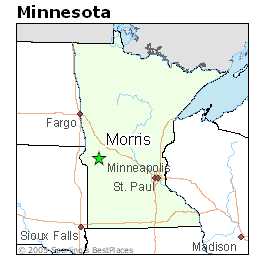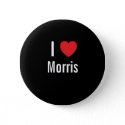We take for granted that Minnesota is a big league sports state in 2010. The Minnesota Twins had a long history when they moved into Target Field, which all summer is going to be the object of considerable pride for all Minnesotans, or so we're told. Such is the media gushing about the new facility, I suspect that any naysaying, even nitpicking, is prohibited by law.
It deserves kudos no doubt. But we have lost the protection of a roof, something that made the elements no factor at all. It seemed like a miracle when Minnesota's teams entered the Dome, because all of a sudden the weather issues attendant with sports in this northern place disappeared, instantly, as if by magic.
Fans in Baltimore could bemoan rain in April and fans in Texas had to battle stifling midsummer heat (which was probably as much an inconvenience as any of our weather).
But once our Metrodome opened, we could enjoy the whole spectrum of big-time sports events including the mid-winter Super Bowl. The Metrodome still stands and it will be the home of Minnesota's Vikings, whose owner is pleading like a spoiled infant for his own new stadium. He'll probably get it.
The old Metropolitan Stadium in Bloomington is receding into the distant past. Part of the reason is that it's completely gone. At the end, as with all venues that are on the verge of being replaced, it was criticized in strong terms. This of course is always part of the process of selling a new stadium - insisting that the existing one is unacceptable.
But "the Met" gave us glorious outdoor major league baseball, something we now see heralded again with Target Field. And boy did we have to earn it here.
"The Met" was built on what was then called "the Bloomington prairie" in the mid-1950s. But we were actually a long way from getting major league baseball. And it wasn't a foregone conclusion that it was coming. We shouldn't forget the sheer balls that our state leaders had in furthering that project.
April of 1956 saw the Met debut as a baseball facility to considerable fanfare, as the Minneapolis Millers took the field vs. Wichita in an American Association minor league game. Can you imagine Minnesota being anything less than a major league state? The Millers were embraced fondly at that time and their caliber of play was really just a tiny notch below what the majors afforded.
But our state, understandably, wanted to be part of "the big show."
A lot of things in America weren't the same as they are now. America painfully watched as the deep south had to be dragged, pretty much kicking and screaming, into the modern age of civil rights. Joe Soucheray wrote that at the time the Met opened, "the United States Supreme Court had just ordered integrated seating on the buses in Montgomery, Alabama." Soucheray wrote this in a small book he wrote at the time the Met closed.
My eyebrows went up as I read Soucheray's review of some entertainment attractions in the Twin Cities in April of 1956. The Prom Ballroom! Pat Boone was playing there.
Dave Moore was always very protective of his memories of the old Nicollet Ballpark, and I'm the same regarding the Prom. These old landmarks, existing only in our memory now, were fine for their time but got bulldozed by progress. The late Dave Moore was a television news celebrity. He always felt the need to remind us of the Millers, who had in their ranks the likes of Willie Mays at various times.
It's always important for these legacy chapters to be impressed on us, to give us perspective, and I almost get misty thinking about the Prom Ballroom.
Real ballrooms aren't built anymore - are they? - and the one in Glenwood has the "ballroom" name, I assume, mostly out of nostalgia. The real Lakeside Ballroom there burned down. The new one is "better" by a whole lot of criteria but it isn't anything like the old Lakeside, where the men's room actually had a trough, like in a barn, for men to relieve themselves.
Imagine a much larger Lakeside Ballroom and that was the Prom Center in St. Paul. The size allowed the Prom to be used for much more than dancing. It was a very popular boxing venue.
In the 1970s, a rather large circle of jazz music enthusiasts in Morris would make "pilgrimages" to the Prom to hear certain prominent bands of the time. The adults included Doug Garberick, Larry Schaub and John Woell. Mostly it was high school and college-age youth of this community making the trip.
There were no reserved seats so it was important to jockey for the best seats available by just racing in when the doors opened. The young guys in our party, appropriately, rolled up sleeves for this task and "saved seats" for our elders who had crossed the street to enjoy some "refreshments" at a place called Denny's Loft.
We heard marvelous music in those days. The main attraction was the Maynard Ferguson Orchestra. Such was the mania that built among young fans of that band, Maynard actually had to work on them to "cool it" at least once.
Buddy Rich brought his band and one-of-a-kind drumming to the Prom. Buddy was in that distinctive group of artists who developed their artistry in vaudeville, a world in which you'd commit yourself totally to the exclusion all other of life's obligations such as education. Such artists could reach breathtaking heights of ability.
We went to see Woody Herman and his "Thundering Herd." I remember once as us young people raced in to reserve chairs, we ran right past Woody himself who was tinkering with and testing his clarinet.
It wasn't unusual in those days for band members to mix with the audience during intermissions between "sets." It seemed like a much more relaxed time. Band members might even have a cocktail visible onstage. Social drinking was quite approved.
Our gang wouldn't have gone down there to see Pat Boone, but I'm sure he put on a good show on that April of '56 weekend.
Soucheray wrote that "Downtown Chevrolet Company had a last-ditch closeout on 1955 Chevs for as low as $1,245." Yes, different times.
Charlie Johnson of the Minneapolis Tribune wrote that the new Met Stadium would be "the last word in baseball facilities, one that will stand for many years as a symbol of private enterprise at its best."
I'm not sure Johnson would envision the Met lasting only until 1981. Or that he could imagine the Dome at all. Right from the get-go, the purpose of the Met was to attract major league baseball. Construction began in September of 1955 when I was less than a year old. Our family lived in St. Paul then.
Minnesota came close to luring the Giants, the New York team that eventually landed in San Francisco. We ended up with the Washington Senators of Calvin Griffith, and I doubt anyone regrets it. The Met at its inception was minor league in its qualities, only with the potential to blossom into a big league park. Its seating capacity was around 20,000.
New "wings" were yet to come. Modest though it was, the Met was cause for considerable community celebrating. At 12:30 on Day 1 of baseball then, guess who was the first to speak into a microphone from home plate? Baby boomers will smile instantly at mention of the name. It was Halsey Hall.
Hall was like everyone's favorite grandfather, whom you had to watch carefully lest he sip a little too much booze. In those days we laughed about such things. I remember the iconic Halsey being in Morris for the ceremony honoring Jerry Koosman in 1969. I remember Halsey gesturing to the "key to the city" which had been bestowed amid all the merry recognition, and wondering if it might open the establishment across the street. It was a drinking establishment.
Today it's the Met Lounge which got its name from Koosman's accomplishments with the New York Mets. Koosman had his roots in this area. He was a starting pitcher for the New York Mets who won the world championship in '69. The Twins won their division that year led by the fiery manager Billy Martin, but lost to Baltimore in the league championship series. Baltimore was then done in by the fairy tale Mets with Koosman, a team that had been a laughingstock as an expansion franchise seven years earlier.
Humor such as Halsey's about seeking alcohol was popular in those days. but young people of today might just look puzzled hearing it. Drunk driving wasn't the life-changing offense it is today. Our beloved World War Two veterans were fond of their booze in their leisure time, and they had certainly earned any kind of entertainment they wanted.
The first-ever opening day for the Minnesota Twins in 1961 saw a crowd of just 24,000. It was 6,000 short of a sellout. April baseball never drew well in the Met Stadium years. Time will tell if our new Target Field with its meticulous engineering to blunt the elements, will do better in this regard.
In 1980 we reached a milestone that shouldn't be overlooked: rock and roll played over the sound system during breaks. It was a matter for debate at the time with Twins manager Gene Mauch actually expressing disapproval. Can you imagine that?
But time marches on, dragging everyone with irresistible force, just like those southerners who had to be forced by the Supreme Court to provide integrated seating on buses.
-Brian Williams - morris mn minnesota - bwilly73@yahoo.com
Tuesday, April 20, 2010
Subscribe to:
Post Comments (Atom)






















No comments:
Post a Comment